The Aral Sea’s dramatic shrinkage has led to severe desertification, which has become one of the most visible and detrimental consequences of the environmental crisis in the region. As the sea’s size diminished over decades, vast areas of exposed lakebed were left behind, gradually transforming into dry, sandy desert. These once fertile wetlands, which supported a diverse ecosystem, were replaced by barren land, with the once-water-rich environment now consisting of dust and salt.
The process of desertification is primarily driven by the loss of the Aral Sea’s water. Without the natural replenishment of freshwater, the exposed lakebed is subject to the harsh elements. Winds frequently pick up the dried salt and dust, creating massive, toxic dust storms that can travel long distances, affecting not only the immediate area but also distant regions. These storms carry salt, pesticides, and other chemicals left behind by the irrigation practices, contaminating both the air and soil, making the environment increasingly inhospitable for agriculture and wildlife.
The drying of the Aral Sea also led to the loss of vital agricultural land. The exposed lakebed, now prone to erosion, no longer provides the fertile soil that was once supported by the regular cycle of flooding and replenishing by the lake. In turn, local communities, especially farmers, have struggled with reduced crop yields, as the soils became increasingly saline and unable to sustain traditional crops. This has compounded the challenges faced by the people living in the region, many of whom relied on agriculture for their livelihoods.
During the hot summer months, the effects of desertification are most apparent. The landscape is dominated by wide stretches of cracked, dry land, with the remaining patches of water often surrounded by a desolate, salt-encrusted perimeter. The intense heat and lack of vegetation amplify the sense of environmental degradation, with the once-thriving fishing communities now isolated in a landscape that feels increasingly uninhabitable. Despite ongoing efforts to mitigate the damage, desertification continues to threaten the region, affecting not only the environment but the health and economic stability of the local population.
As captured in these photographs, desertification has reshaped the region, offering a stark visual representation of the scale of the ecological disaster. The contrast between the small, dwindling patches of water and the expanding desert serves as a poignant reminder of the long-lasting impact of the Aral Sea’s dramatic shrinkage. While some recovery efforts are underway, the challenge of reversing desertification remains a daunting task for the communities and governments working to restore the health of this once-vibrant ecosystem.
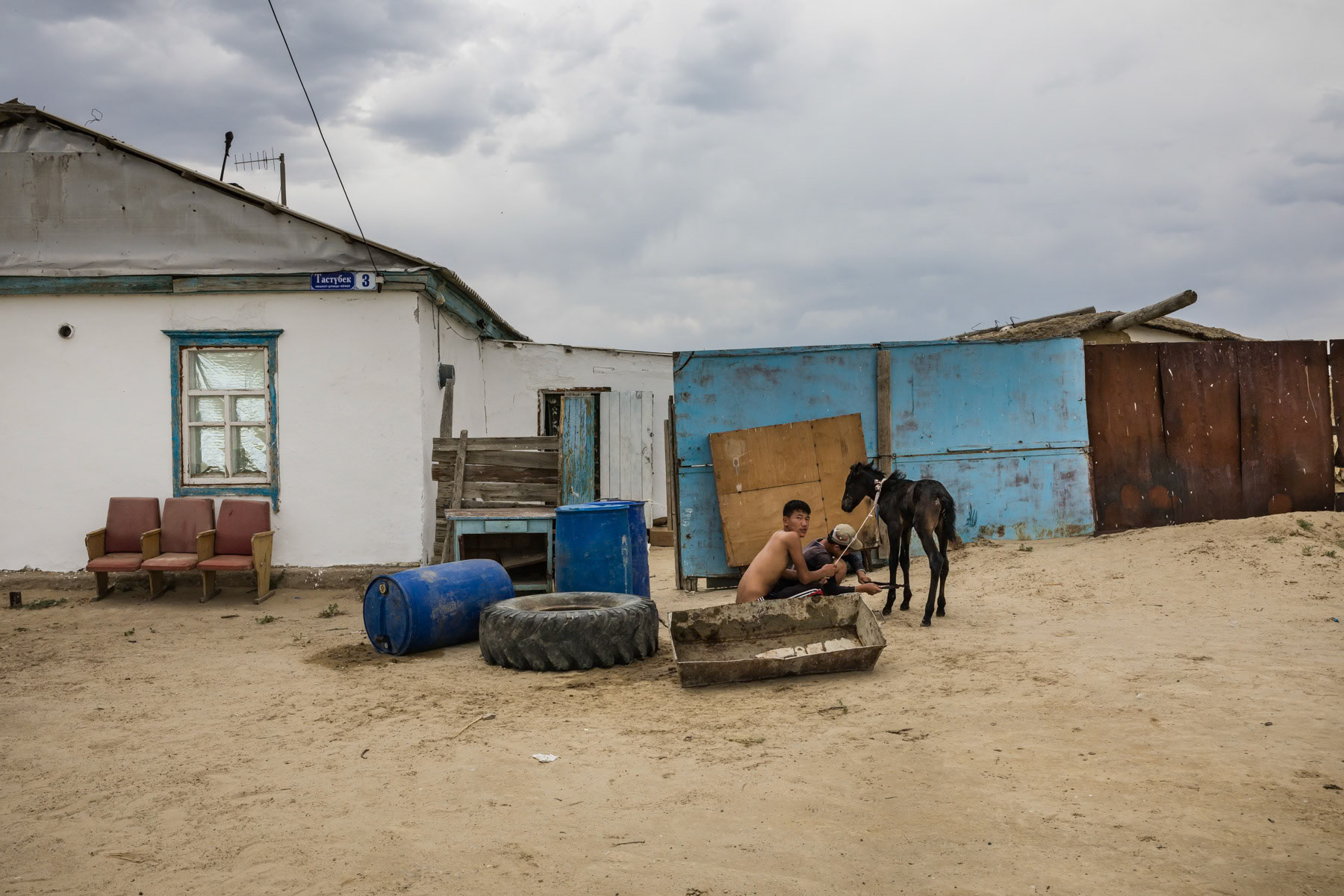
Tastubek village, Aral Sea, Kazakhstan, June 2019

Tastubek village shore. Aral Sea, Kazakhstan, June 2019

A village slowly overtaken by the desert. Akispey village used to be an important village along the shore of the Aral Sea but is now almost one hour drive to the closest access point. Aral Sea, Kazakhstan, June 2019
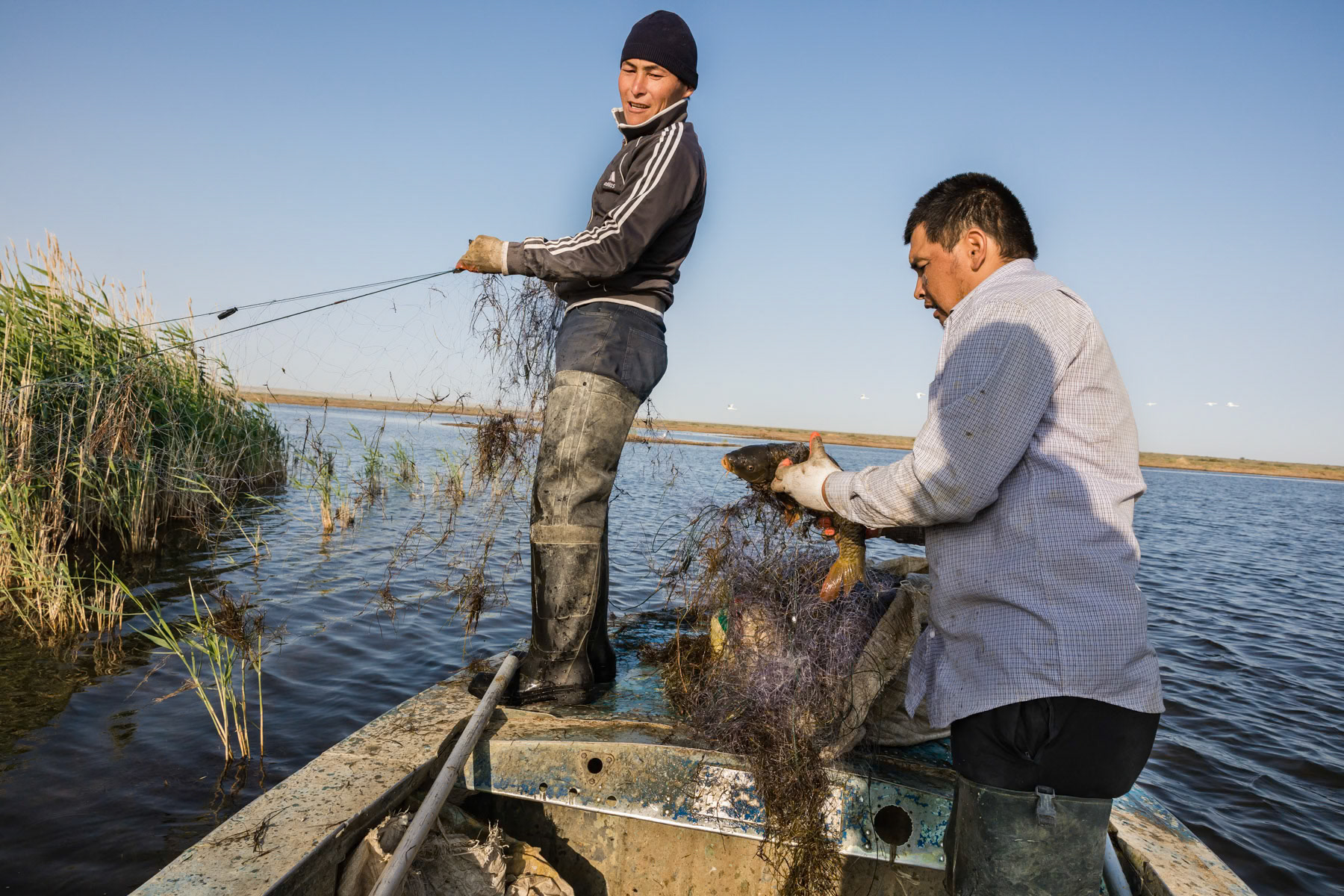
Fishermen at work in the Aral Sea, Kazakhstan, June 2019

The port town of Muynak which used to be the main Aral Sea port in Uzbekistan with fish processing factories and large population. Muynak is now 150 Km or a 6 hours off-road drive to the shore of the Aral Sea. The town is now a semi abandonned desert town. Muynak, Uzbekistan, June 2019

Fisherman in the Aral Sea, Tastubek, Kazakhstan, June 2019

The catch of one net, in average one boat would have 5 to 7 nets in use. One kg of fish is sold by the fishermen for $1,5 and will be consequently sold in the town of Aralsk for 3 times this price. Aral Sea, Kazakhstan, June 2019

Fishermen waiting for sunset before going at Sea. Tastubek, Aral Sea, Kazakhstan, June 2019

Fisherman throwing the fishing nets in the Aral Sea. Akbasty, Kazakhstan, June 2019

A village slowly overtaken by the desert. Akispey village used to be an important village along the shore of the Aral Sea but is now almost one hour drive to the closest access point. Aral Sea, Kazakhstan, June 2019

Wild horses in the Aral Sea desert near Akbasty, one of the remaining inhabited places near the Sea. Kazakhstan, June 2019
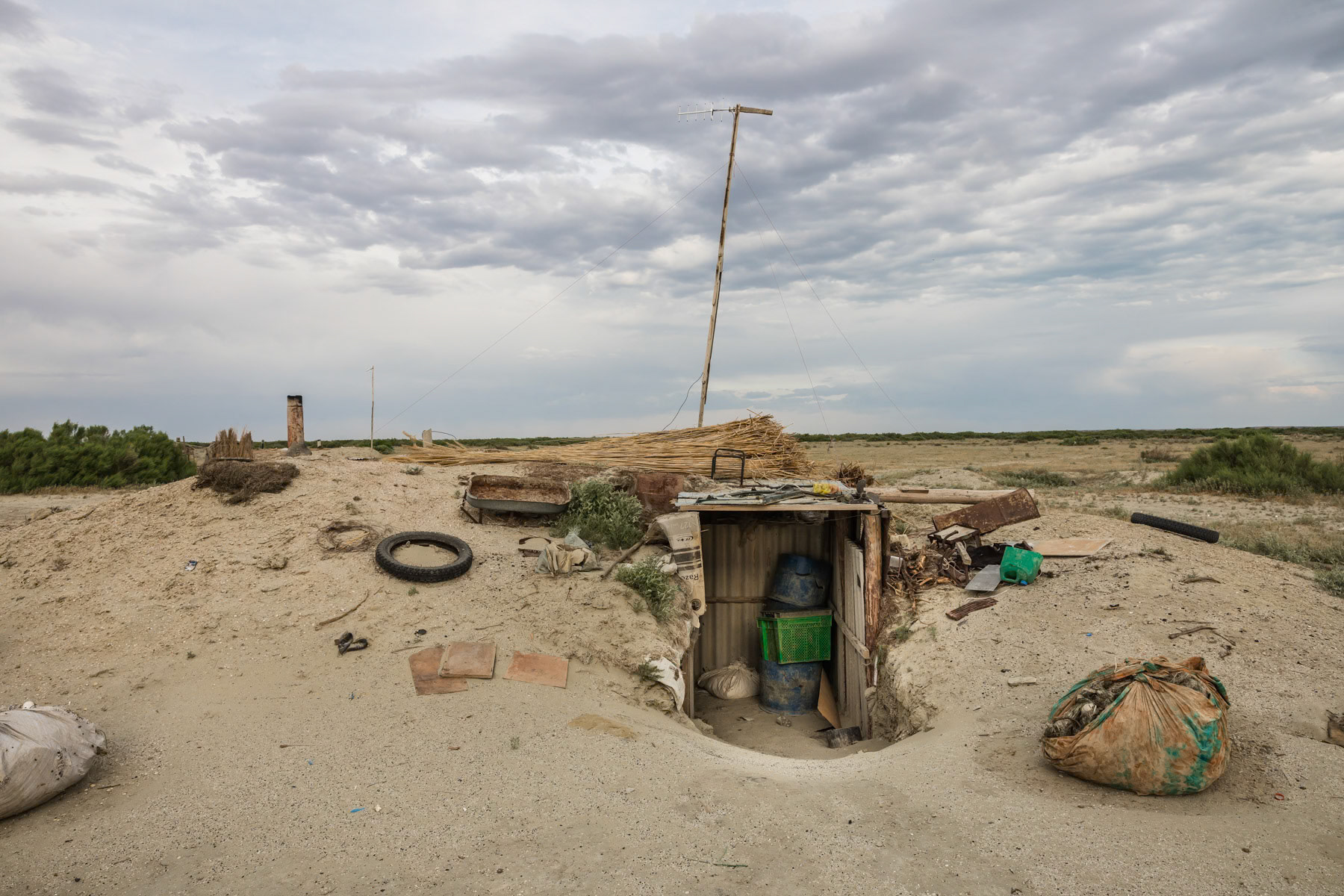
Underground shelter for fishermen used to store things and rest in the summer and to live several days in the winter when road conditions are too difficult and when the ice season starts. Tastubek, Aral Sea, Kazakhstan, June 2019

Tastubek village near the Aral Sea, Kazakhstan, June 2019

The Aral Sea, Tastubek, Kazakhstan, June 2019

Camels are an important source of income and subsitance for the populations living in the remote villages around the Aral Sea. Tastubek, Kazakhstan, June 2019

Start of the fishing season, fishermen going to throw fishing nets in the late afternoon. Akbasty, Aral Sea, Kazakhstan, June 2019
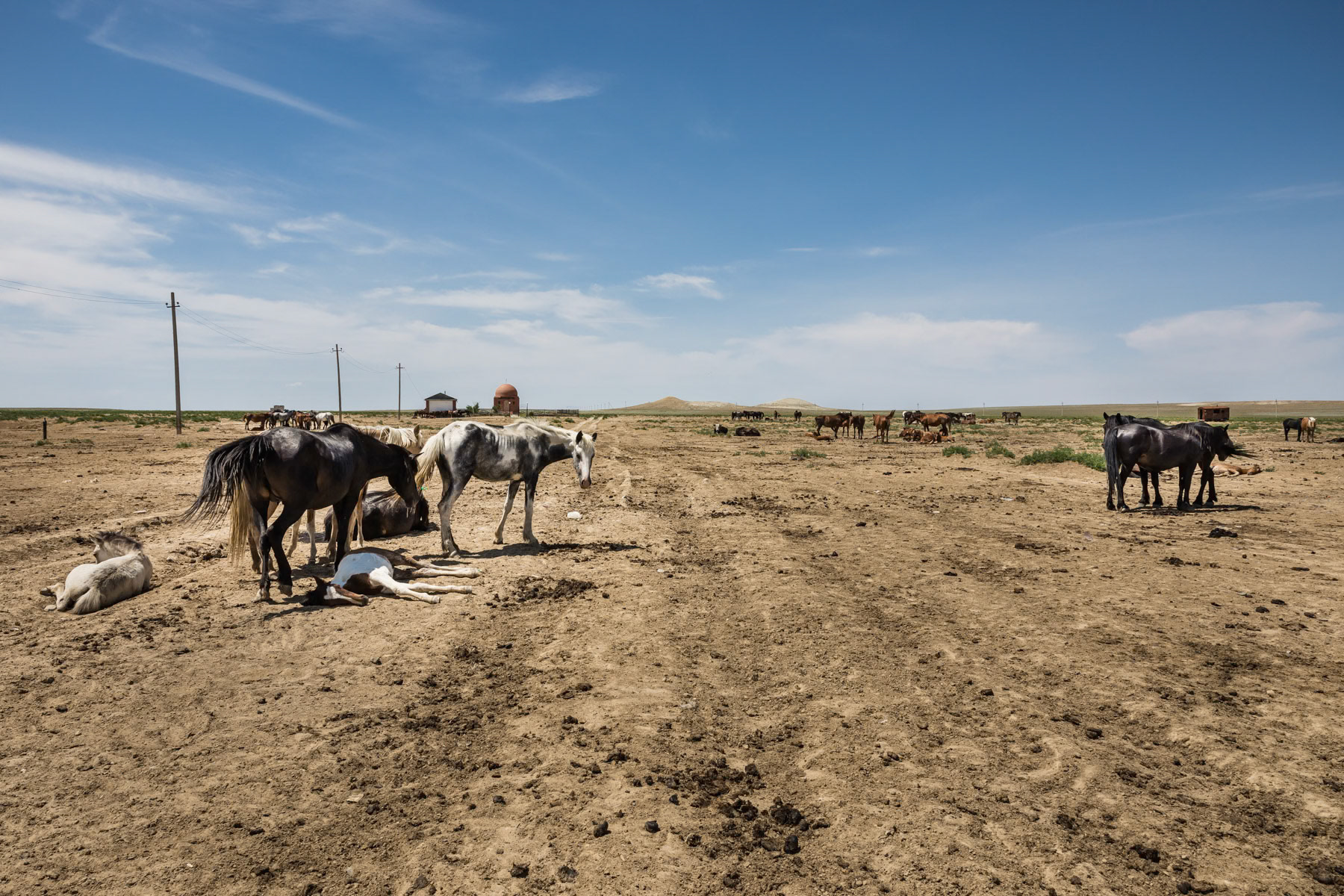
Tracks leading to the Aral Sea. Zhalanash, Kazakhstan, June 2019

Feed for animals, Tastubek village near the shore of the Aral Sea, Kazakhstan, June 2019

Tastubek village near the Aral Sea, Kazakhstan, June 2019

Tastubek near the Aral Sea, Kazakhstan, June 2019

Underground shelter for fishermen used to store things and rest in the summer and to live several days in the winter when road conditions are too difficult and when the ice season starts. Tastubek, Aral Sea, Kazakhstan, June 2019
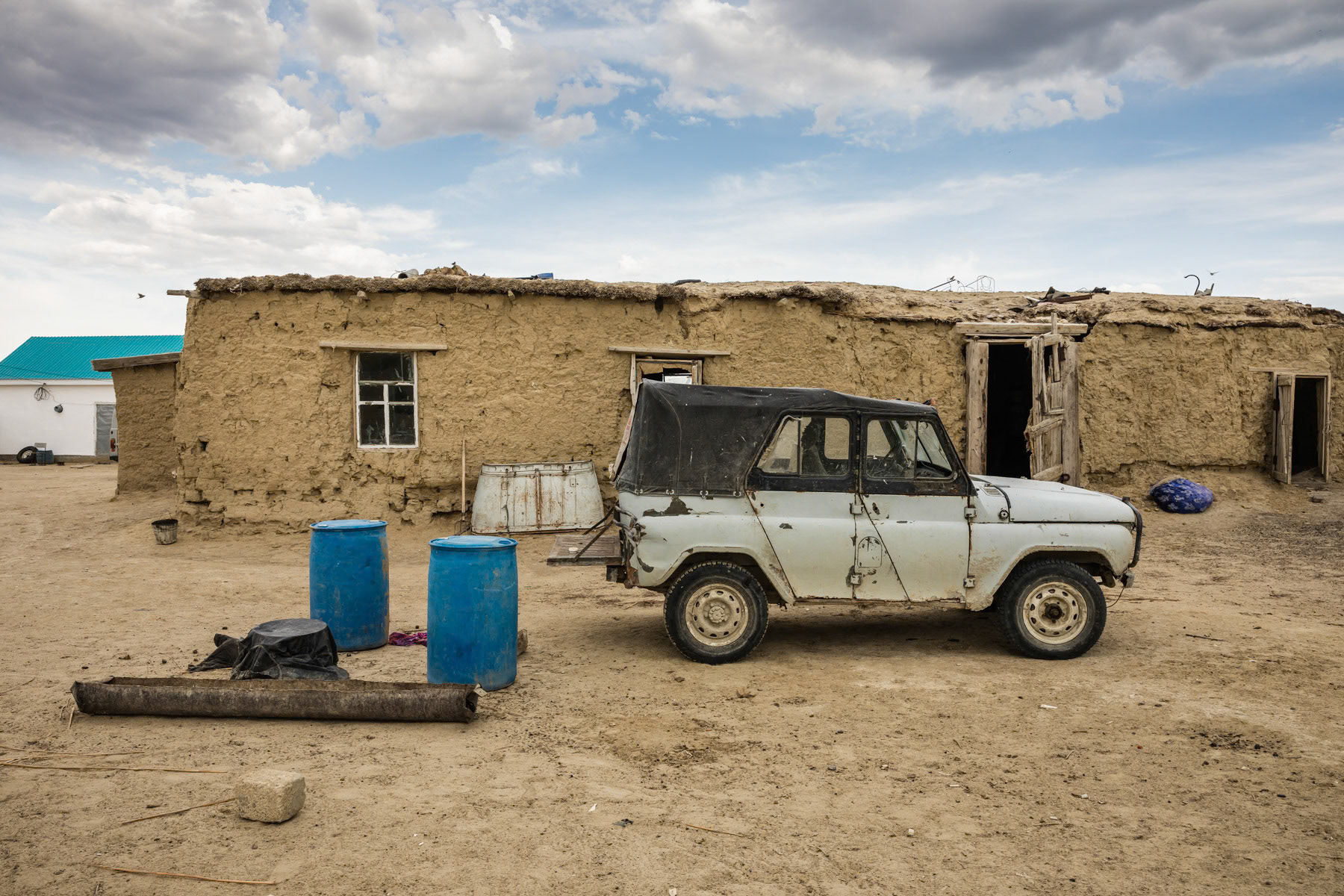
Tastubek village near the Aral Sea, Kazakhstan, June 2019

Fishermen go fishing in the Aral Sea, Tastubek, Kazakhstan, June 2019

A village slowly overtaken by the desert. Akispey village used to be an important village along the shore of the Aral Sea but is now almost one hour drive to the closest access point. Aral Sea, Kazakhstan, June 2019

An abandonned mooring where the sea was transformed into a salt field. In summer the temperatures can easily go above 50 degrees Celsius accelerating the evaporation process of what is left of the Aral Sea, Kazakhstan, June 2019
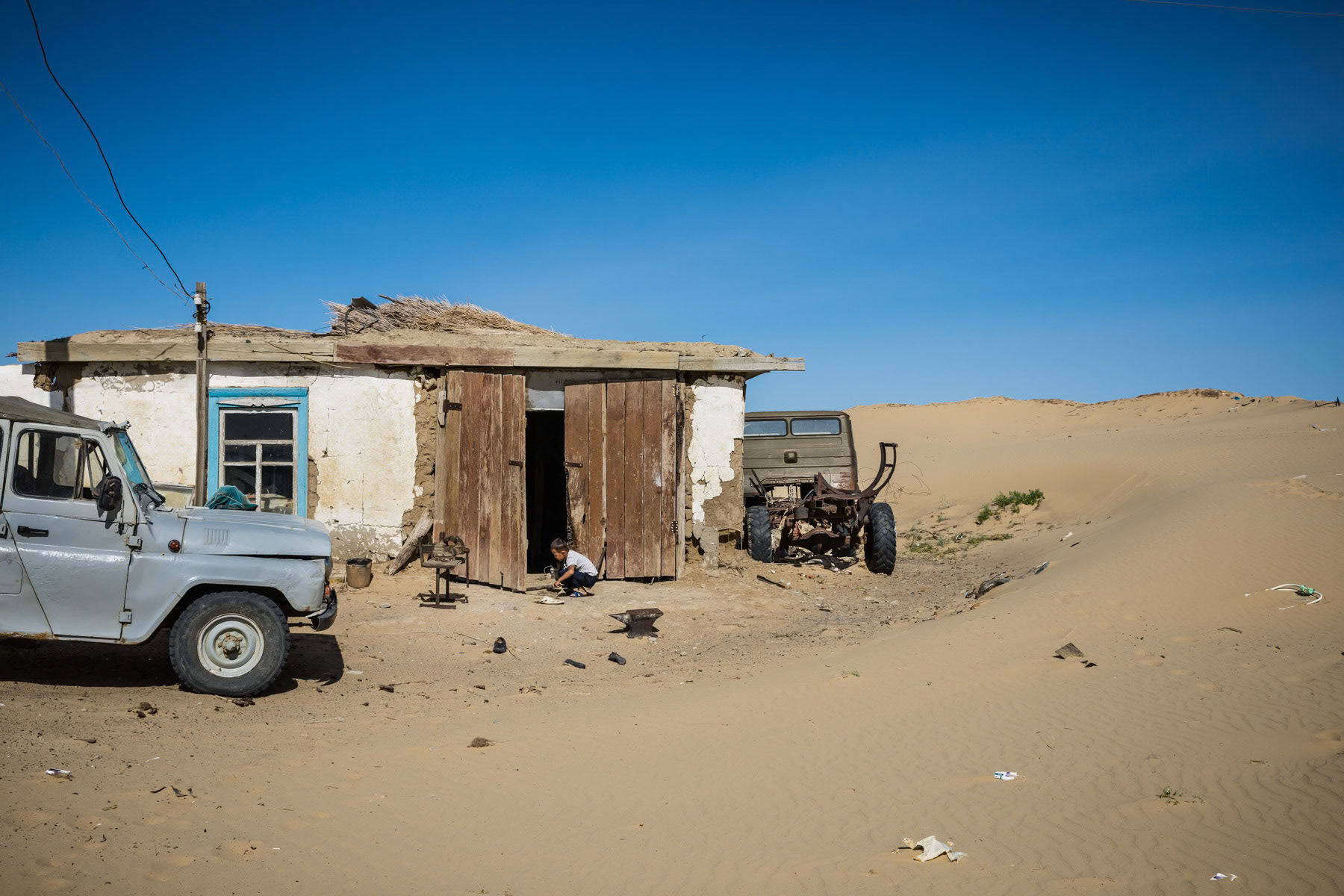
A village slowly overtaken by the desert. Akispey village used to be an important village along the shore of the Aral Sea but is now almost one hour drive to the closest access point. Aral Sea, Kazakhstan, June 2019
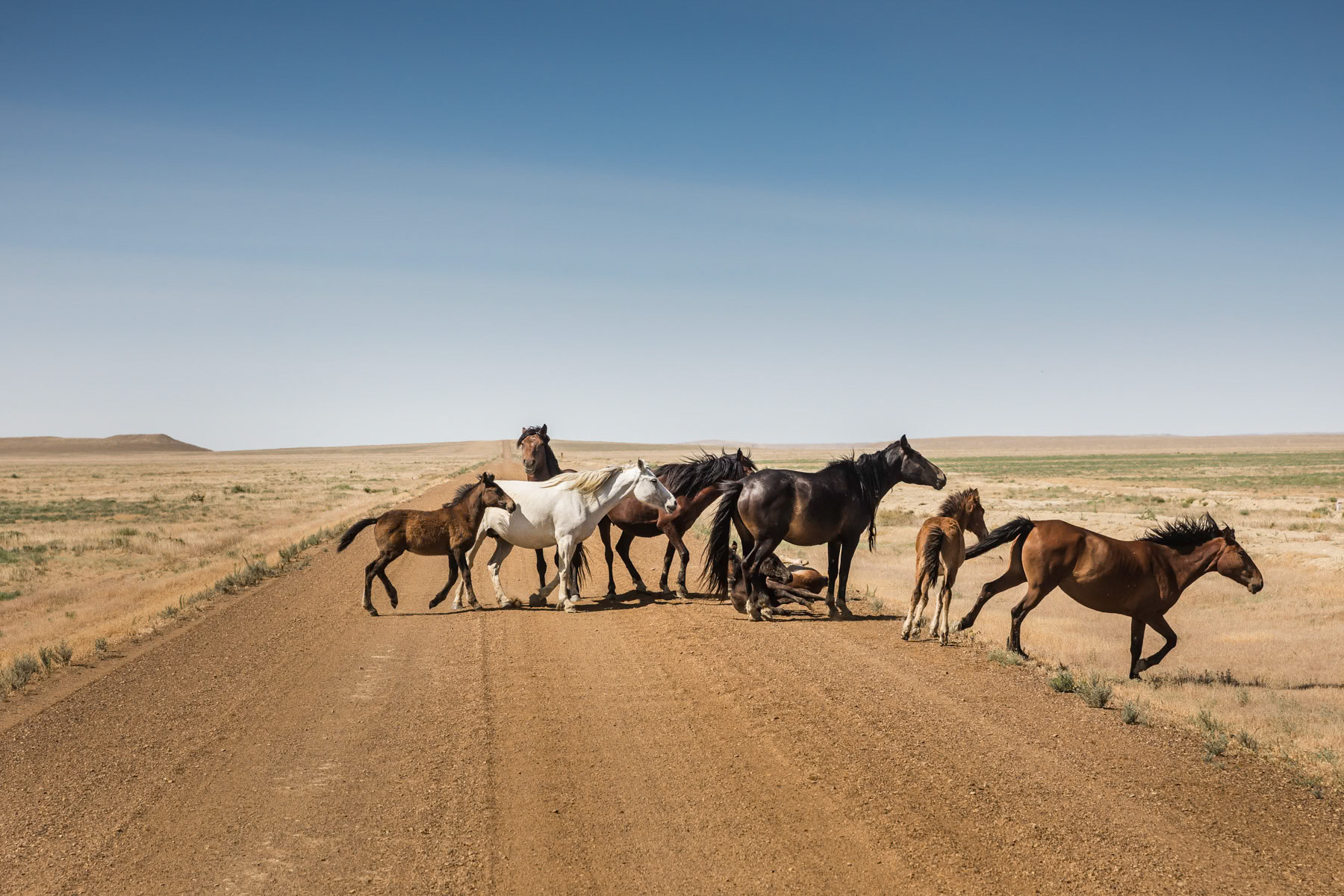
Wild horses in the Aral Sea desert, Kazakhstan, June 2019
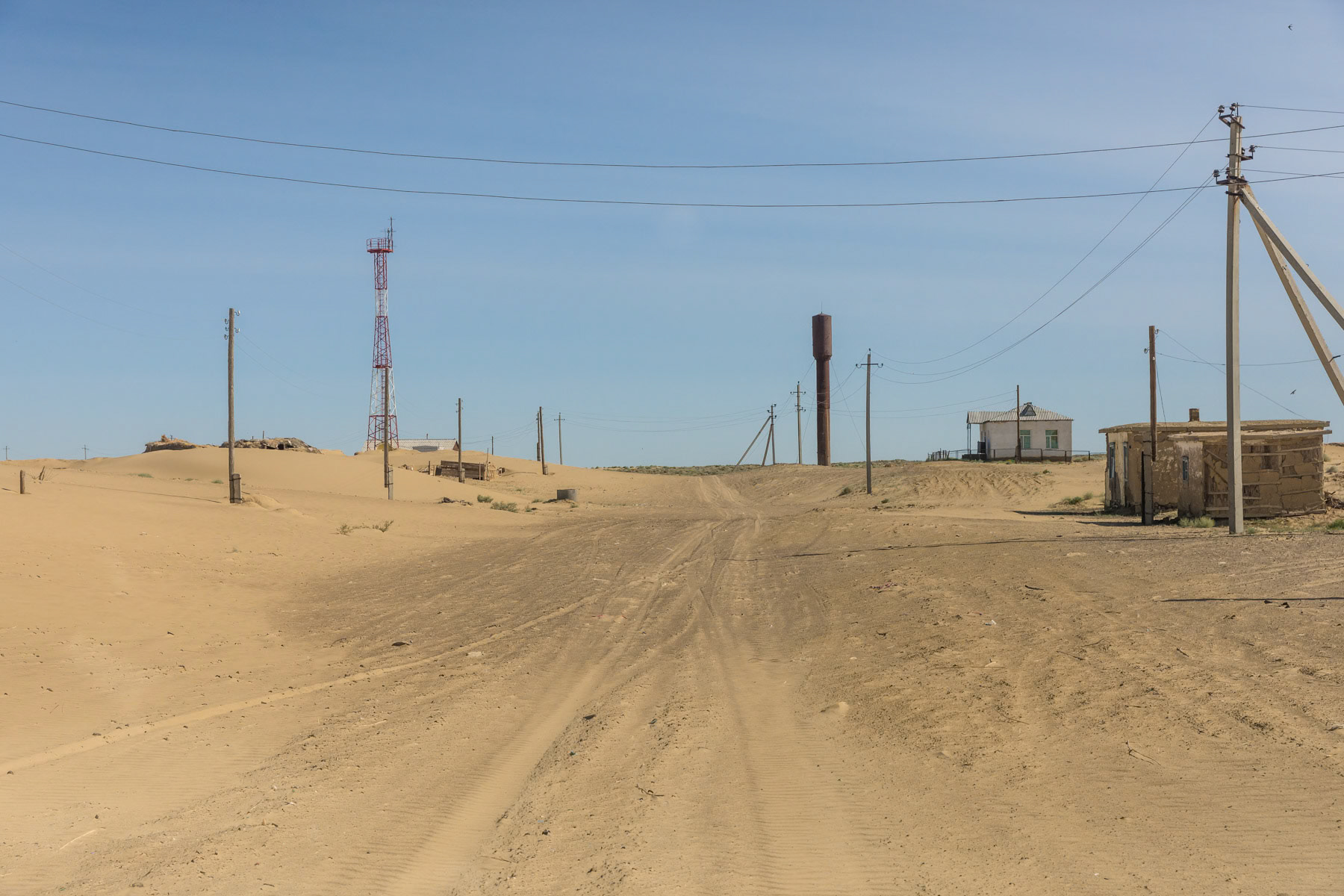
A village slowly overtaken by the desert. Akispey village used to be an important village along the shore of the Aral Sea but is now almost one hour drive to the closest access point. Aral Sea, Kazakhstan, June 2019

Road along the Aral Sea towards Akbasty, Kazakhstan, June 2019

The catch of the day. One kg of fish is sold by the fishermen for $1,5 and will be consequently sold in the town of Aralsk for 3 times this price. Aral Sea, Kazakhstan, June 2019
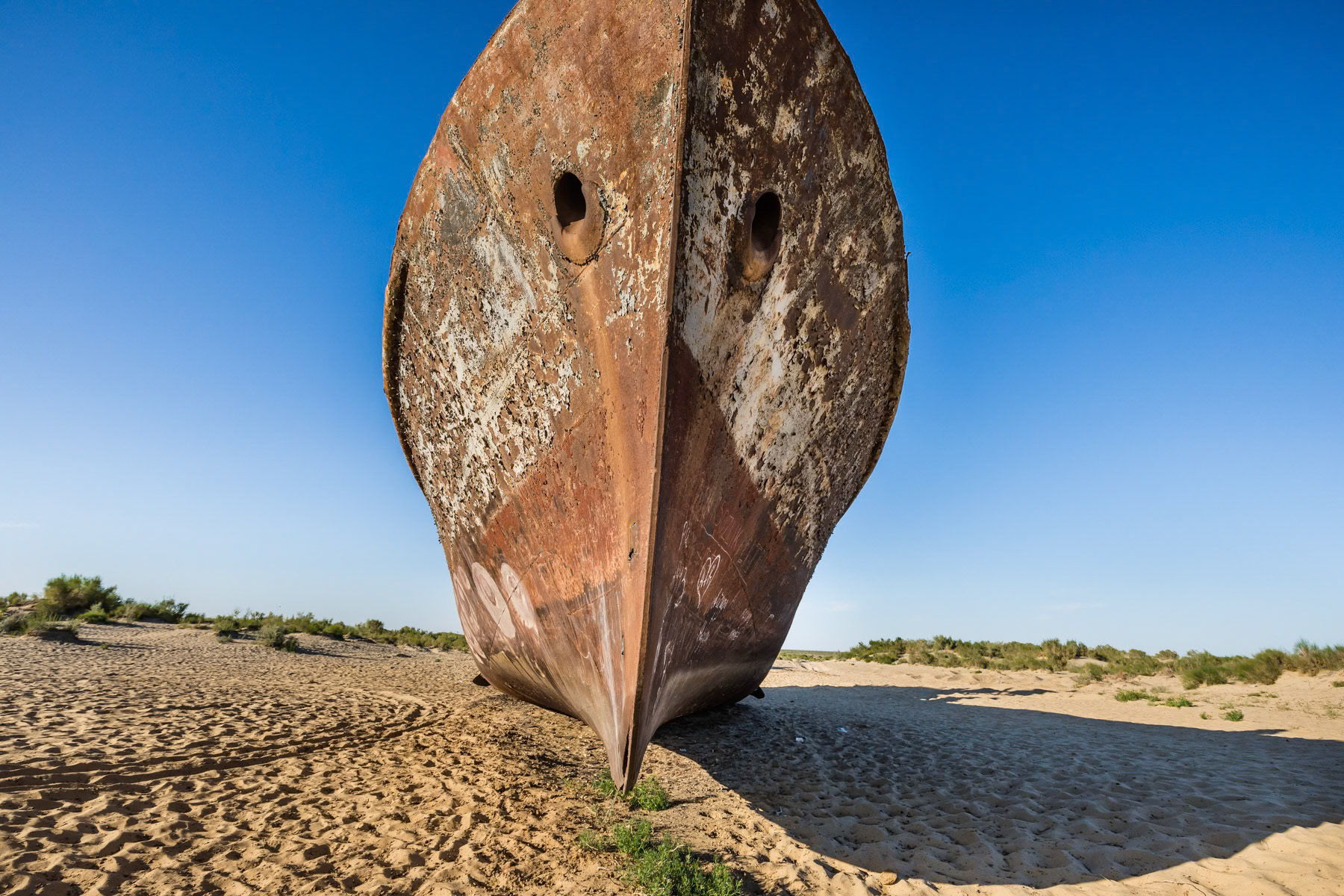
The port town of Muynak which used to be the main Aral Sea port in Uzbekistan with fish processing factories and large population. Muynak is now 150 Km or a 6 hours off-road drive to the shore of the Aral Sea. The town is now a semi abandonned desert town. Muynak, Uzbekistan, June 2019

The level of desertification is really apparent when snow and ice have made place for the desert that replaced large parts of the Aral Sea, Kazakhstan, June 2019

The port town of Muynak which used to be the main Aral Sea port in Uzbekistan with fish processing factories and large population. Muynak is now 150 Km or a 6 hours off-road drive to the shore of the Aral Sea. The town is now a semi abandonned desert town. Muynak, Uzbekistan, June 2019

A dam project that was completed in 2005 by the Kazakh autorities with the support of the World Bank. The dam controls the outflow of water and has had the positive effect to preserve what's left and even expand the water volume on the Kazakhstan part of the sea. Aral Sea, Kazakhstan, June 2019










